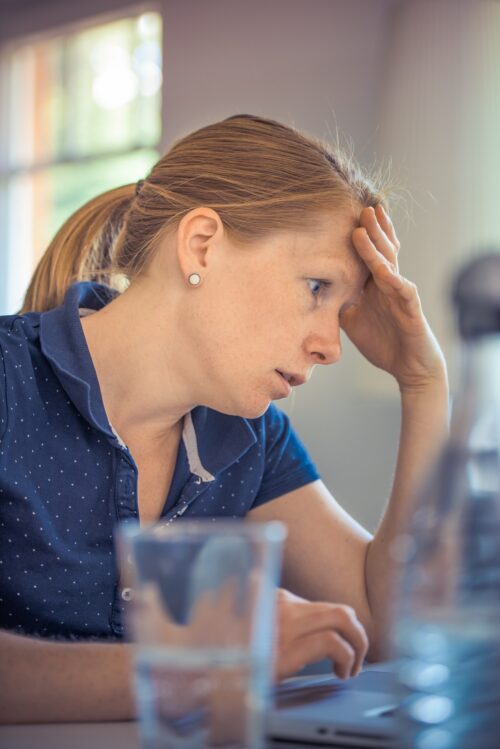As an individual, you never know when you might find yourself in a situation that requires first aid assistance. Whether it’s a minor injury or a life-threatening emergency, knowing basic first aid skills can make a significant difference in the outcome. In this article, we’ll explore the importance of first aid training in everyday life, the key components of a 1st aid course, and practical tips and techniques for common first aid situations.
While a professional medical response is always the preferred option in emergency situations, in many cases, the first few minutes are the most critical. Having a basic understanding of first aid techniques can help you act quickly, confidently, and effectively in those crucial moments. So, let’s dive into the world of first aid and learn how you can become a lifesaver in your community.
Importance of first aid training in everyday life
First aid training is essential because accidents and medical emergencies can happen anywhere, at any time. Emergencies can occur at home, work, or in public places, and having the knowledge and skills to respond appropriately can save lives. In addition, first aid training provides you with the ability to recognise and respond to various types of emergencies, from minor injuries to life-threatening situations.
Moreover, basic first aid training teaches you how to remain calm and focused in high-pressure situations. This is crucial, as panic can lead to poor decision-making and exacerbate the emergency. By learning first aid, you not only acquire the skills to respond effectively but also develop the mental fortitude to manage stress and anxiety during emergencies.
Lastly, being skilled in first aid can have a positive impact on the people around you. Friends, family, and colleagues will feel safer and more confident knowing that you are prepared to help in case of an emergency. Ultimately, first aid training can foster a sense of responsibility, empathy, and community spirit.
Key components of a 1st aid course
A comprehensive 1st aid course should cover a wide range of topics and techniques to prepare you for various emergency situations. Some of the key components of a typical course include:
- Assessment of the scene and patient: This involves learning how to effectively assess the situation, determine the nature of the emergency, and check for potential hazards before administering first aid.
- CPR and AED: Responding to cardiac arrest situations successfully requires knowledge of cardiopulmonary resuscitation and automated external defibrillators.
- Wound care: First aid courses should teach you how to manage different types of wounds, such as cuts, abrasions, punctures, and burns, as well as how to control bleeding and prevent infection.
- Fractures and dislocations: Learn how to recognise and immobilise fractures and dislocations to minimise further injury and discomfort.
- Poisoning and allergic reactions: Understand the signs and symptoms of poisoning and allergic reactions, and learn how to administer appropriate first aid treatments.
- Choking and airway obstruction: Learn how to recognise and respond to choking emergencies, including the Heimlich manoeuvre and other airway clearance techniques.
- Heat and cold emergencies: Acquire the knowledge to identify and manage heatstroke, hypothermia, and other temperature-related emergencies.
Common first aid situations and essential tips
Mental health emergencies
Mental health emergencies can manifest in various ways, such as panic attacks, suicidal thoughts, self-harm, or extreme emotional distress. When encountering someone experiencing a mental health crisis, it’s crucial to remain calm, empathetic, and non-judgmental. Listen to the person, offer reassurance, and encourage them to seek professional help.If the individual is in immediate danger, do not hesitate to call emergency services. In the meantime, ensure their safety by removing any potential hazards, such as sharp objects or medications, and stay with the person until help arrives.
Sexual harassment and assault response
In cases of sexual harassment or assault, your primary role as a first aider is to provide emotional support and reassurance. Encourage the victim to report the incident to the authorities, but respect their decision if they choose not to. Offer to accompany them to a safe location or medical facility if necessary.In some situations, the victim may require medical attention for injuries or potential exposure to sexually transmitted infections. Encourage them to seek professional care and remind them that they have a right to confidentiality and respect from medical professionals.
Managing stress and anxiety
Stress and anxiety can lead to various physical and emotional symptoms, such as headaches, chest pain, difficulty breathing, and feelings of panic. As a first aider, you can help individuals experiencing stress or anxiety by encouraging them to practise relaxation techniques, such as deep breathing exercises, progressive muscle relaxation, or visualisation.Additionally, offer a listening ear, validate their feelings, and encourage them to seek professional help if their stress or anxiety persists or worsens.
Basic first aid techniques and procedures
There are numerous first aid techniques and procedures that can be applied in different emergency situations. Some of the most common and essential techniques include:
- CPR: A life-saving procedure performed on individuals in cardiac arrest to maintain blood flow to the brain and other vital organs until professional medical help arrives.
- The Heimlich manoeuvre: A technique used to clear the airway of a choking victim by applying strong upward abdominal thrusts.
- The recovery position: A position used to help unconscious but breathing individuals maintain an open airway and prevent aspiration of vomit or other fluids.
- Bandaging and wound care: Proper cleaning, dressing, and bandaging techniques to prevent infection and promote healing of various types of wounds.
- Splinting and immobilisation: Techniques used to stabilise and immobilise fractures, dislocations, or other injuries to minimise further damage and alleviate pain.
Accessing first aid training in Brisbane, QLD
There are numerous organisations and institutions in Brisbane, QLD, that offer basic first aid training and mental health certification courses. Some reputable providers include St John Ambulance, Royal Life Saving Society, WHS and Training Compliance Solutions and Australian Red Cross. These organisations typically offer a variety of courses, from basic first aid and CPR to more advanced courses tailored to specific needs or industries
When choosing a first aid course on mental health, ensure that the training provider is accredited and recognised by relevant regulatory bodies. Additionally, consider the course content and duration, as well as the availability of ongoing support and resources for continued learning and skill development.
The benefits of basic first aid training for individuals and communities
Basic first aid training on mental health offers numerous benefits to both individuals and the communities they live in. For individuals, acquiring first aid skills can increase confidence, self-sufficiency, and a sense of responsibility towards others. Furthermore, first aid training can lead to better decision-making and problem-solving abilities, which are valuable skills in all aspects of life.
For communities, widespread basic first aid training can contribute to a safer and more resilient population. When a significant number of community members are trained in first aid, the chances of successful interventions in emergency situations increase. This can lead to fewer hospitalisations, a reduced burden on emergency services, and ultimately, lives saved.
Incorporating first aid education into workplace and school environments
Incorporating first aid education into workplace and school environments can help create safer spaces for employees, students, and visitors. Employers can provide first aid training to staff, designate first aid officers on mental health, and ensure they are readily available and maintained. This can contribute to a more positive work environment and reduce the risk of workplace injuries and accidents.
Similarly, schools can offer basic first aid on youth mental health training to students, teachers, and administrative staff. This can help create a culture of safety, responsibility, and preparedness among students, and provide a valuable life skill that they can carry with them into adulthood. Additionally, schools can ensure that first aid kits, first aiders and equipment are available and accessible in all areas of the school, including classrooms, playgrounds, and sports fields.
Continuing education and resources for first aid knowledge
First aid knowledge and skills require ongoing learning and practice to stay current and effective. Fortunately, there are numerous resources and opportunities available for individuals and communities to continue their first aid education.
One option is to participate in mental health refresher courses or mental health first aid training courses. These courses can help individuals deepen their knowledge and skills in specific areas, such as wilderness first aid, paediatric first aid, or mental health first aid.
Another option is to stay informed and up-to-date with the latest first aid guidelines and techniques. This can be achieved through reading relevant literature and publications, attending seminars or webinars, or joining online communities or forums dedicated to first aid.
Finally, it’s essential to maintain first aid kits and equipment regularly and replace expired or damaged items promptly. Keeping a well-stocked and functional first aid kit can make a significant difference in an emergency.
Conclusion: The lifesaving impact of mastering basic first aid skills
In conclusion, basic first aid training is an essential life skill that can make a significant difference in emergency situations. By learning first aid, individuals can become confident, prepared, and effective first responders, and contribute to a safer and more resilient community. From mental health emergencies to physical injuries, the skills and knowledge gained from first aid training can save lives and make a positive impact on the people around us. So, take the first step towards becoming a lifesaver and enrol in a basic first aid course today.
Enrol in a basic first aid course in mental health and youth mental health today and become a lifesaver in your community. Remember, the skills you learn in a first aid course can make a significant difference in emergency situations, so take the first step towards becoming a prepared and confident first responder.












